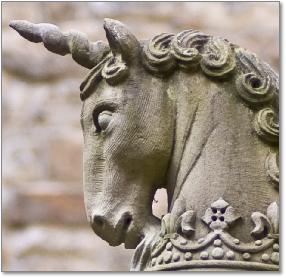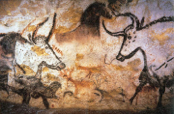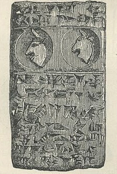|
|
|
How Unicorns Got Kicked Out of the Bible A wild tale of Spanish ambassadors, lost civilizations, Queen Esther, gallant British officers dangling from cliffs, Bible detractors proved wrong, and Hebrew translation at work |
||||||
 |
||||||
"His glory is like the firstling of a bullock, and his horns are like the horns of unicorns..." Deuteronomy 33:17 King James Version "A firstborn bull- he has majesty, and his horns are the horns of a wild ox..." Deuteronomy 33:17 English Standard Version So how did unicorns get kicked out of the Bible? When King James VI of Scotland and I of England called for an English translation of the Bible that he could live with, the translators took up the Hebrew text that had been lovingly preserved and transmitted by Jewish scholars for millennia. Occasionally they were stumped. Great Britain is short on bronze-boned beasts that drink rivers, have tails like cedar trees, and lie about under lotus plants. So the KJV translators respectfully lifted the Hebrew word into English without translation: behemoth. Likewise, Moses spoke in Deuteronomy 33 of a creature no one knew. But the Septuagint translators had called it a monoceros, which in Greek means "one horn," as does unicorn in Latin. So with nothing better to go on, unicorn it was. What the Authorized Version scholars knew of Ancient Near Eastern history, culture, and literature was meager compared with today's abundance. The Assyrian Empire to whom Jonah had preached, for instance, had vanished without a trace after their defeat at Carchemish in 605 BC. So much so that nineteenth century Bible critics upheld Scripture's talk of Assyria as proof that Scripture was not much more than far-fetched fables. The Assyrians, like the Babylonians and Persians, had recorded their deeds in cuneiform, wedge-shaped writing originated by the Sumerians.They had filled libraries with reed-impressed clay tablets, but their cities were buried and their language forgotten. |
||
click on images for a larger view |
||
In 1618, the Spanish ambassador to Persia began nosing around some astounding ruins. He identified Persepolis, the magnificent palace of Darius the Great, where Queen Esther no doubt held court in her day. Alexander the Great had sacked Persepolis in 330 BC, and required 20,000 mules and 5000 camels to bear the booty. But in the black jasper ruins that remained were funny little marks that resembled bird tracks. Scholars in Europe concluded they were ornamental. Similar marks were known in Behistun, Iraq, 300 feet up a cliff in the mountains of Kurdistan. Like a tremendous eternal billboard, giant cliffside carvings of the Persian god Ahuramazda, Darius the Great, ten conquered kings, and those same strange bird tracks awed travellers. Slowly, over 200 years, the Persian marks were recognized as inscriptions, and decipherment had been gaining momentum in the hands of the curious and clever. But to advance any further in cracking the code, longer passages of cuneiform were required. There they were; plenty of them: 300 feet up a sheer rock face in Behistun! |
||
click on images for a larger view |
||
It was a gallant British army officer who went after them. Sir Henry Rawlinson (1810-1895), a polyglot scholar, distinguished athlete, and English gentleman, climbed to the narrow ledge beneath the inscriptions and copied the lowest lines. But this would not do. Balancing atop precarious ladders, he copied the higher marks, "with no other support than steadying the body against the rock with the left arm, while the left hand holds the notebook, and the right hand is employed with the pencil." The uppermost inscriptions could not be left behind, but were beyond the reach even of ladders. Rawlinson hired a wiry and willing "wild Kurdish boy" to scramble up a crack, pound in pegs and rig ropes, then take paper mache casts of the cuneiform code. With copies of the the Behistun cliffside carvings captured, Rawlinson devoted himself just as diligently to their decipherment and succeeded. Another intrepid English explorer was at work in Mesopotamia in the mid 1800s. Henry Layard discovered and excavated the lost cities of the Assyrian Empire, previously known only from Scripture, and with them, countless panels, pillars, tablets, and cylinders covered with cuneiform. Sennacherib, Jehu, Shalmaneser, Nineveh, Omri: they were all there, and Bible critics who had confidently asserted the Bible's inaccuracy were stunned. Assyriology fascinated the world as the annals and treasures of a lost civilization were brought to light. |
||
click on images for a larger view |
||
The discoveries did more than confirm the Bible's historical accuracy; they kicked unicorns out of the Bible. Assyrian and Hebrew are closely related languages. The ancient Assyrian texts unlocked by Sir Rawlinson, Sir Layard, and others revealed the Assyrian rimu, which Assyrian kings delighted to fight. The current scholarly conclusion is that the rimu is the same beast as Deuteronomy's re'em. The rimu was either the water buffalo or the now extinct auroch. Julius Caesar reported that the Gauls drank from silver-tipped auroch horns. The auroch magnificently graces the Lascaux caves. The last auroch died in the forests of Poland in 1627. |
||
click on images for a larger view |
||
Bovines have two horns. The Hebrew of Deuteronomy 33:17 says horns of the re'em. So how did unicorns get in the Septuagint in the first place? The second row pictures above are ancient, Mesopotamian depictions of the auroch. Notice that in each of them it looks like he has only one horn. Probably the Jewish Septuagint translators' choice of monoceros to translate re'em reflects their familiarity with this Near Eastern artistic convention. Neat, huh?
A few morals of the story: • Many Christians apply inspired and inerrant only to Scripture in the original languages. Every translation carries tradition and a translator's perspective with it. When you learn Biblical languages you gain a better idea of where and why. •Understanding the original Bible languages draws upon extrabibical sources. Studying ancient history, geography, and culture dramatically deepens our understanding of God's Word. •Likewise, the Lord can use your good work in endeavors from grammar to art history, from wildlife biology to rock climbing, to shine His light into the dark. |
||
Images: Shutterstock.com :: Lascaux Cave aurochs photo © Prof Saxx, used by permission; auroch drawing courtesy palaeos.com; Nineveh panel with bulls © Ealdgyth; Behistun carvings photo © Aryobarzan; Behistun drawing, Nineveh painting, and clay tablet drawing are in the public domain in the US because their copyrights have expired :: |
|
copyright ©2022 Alef Press |
|


















